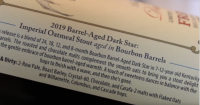madscientist451
Well-Known Member
I'll suggest brewing the recipe you've developed and then getting some beer friends over for a taste comparison with the commercial beer.Right. What do you suggest ?
Try to pick out what you would change, but only change one thing at a time on the re-brew.
Last edited:























![Craft A Brew - Safale S-04 Dry Yeast - Fermentis - English Ale Dry Yeast - For English and American Ales and Hard Apple Ciders - Ingredients for Home Brewing - Beer Making Supplies - [1 Pack]](https://m.media-amazon.com/images/I/41fVGNh6JfL._SL500_.jpg)


































